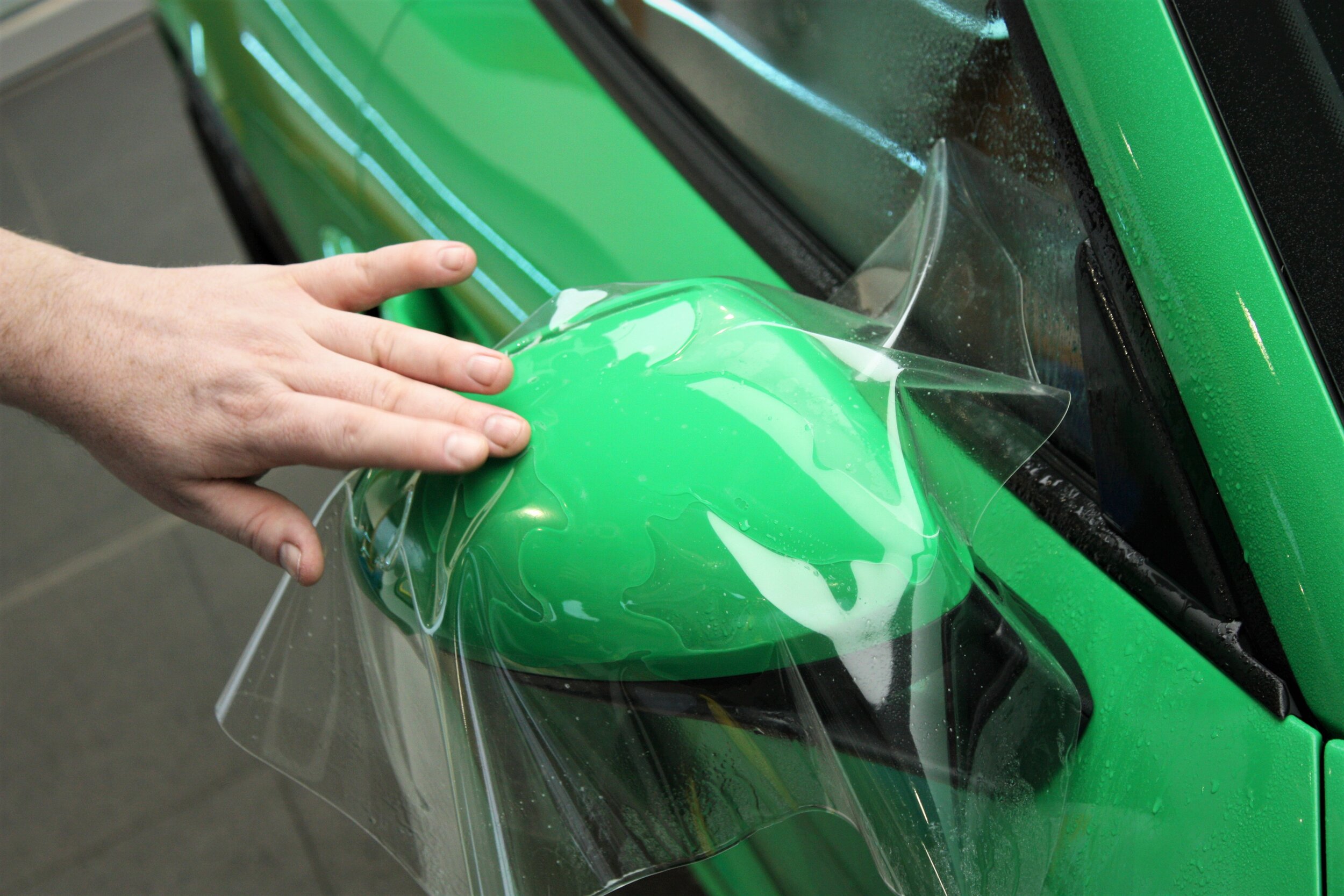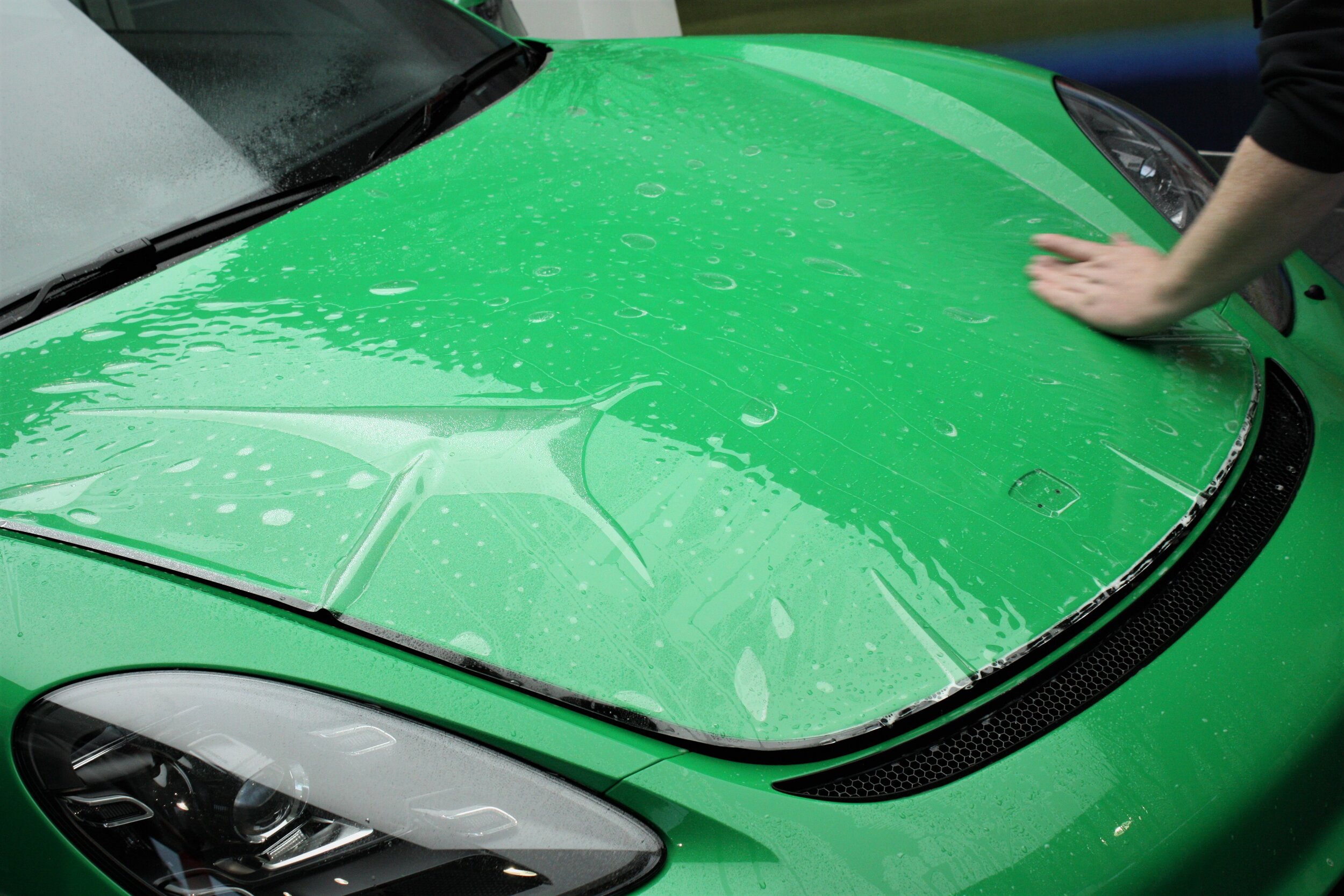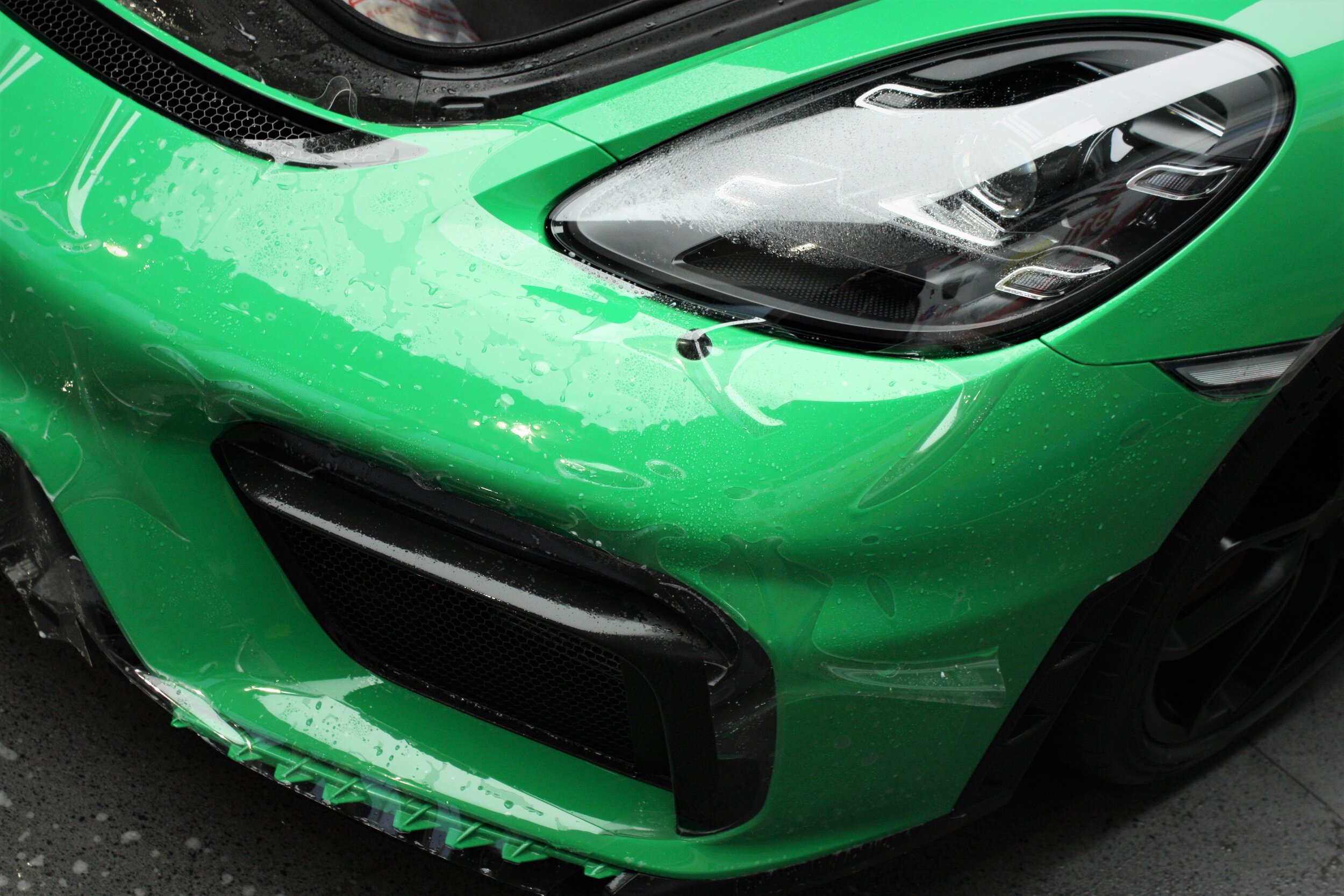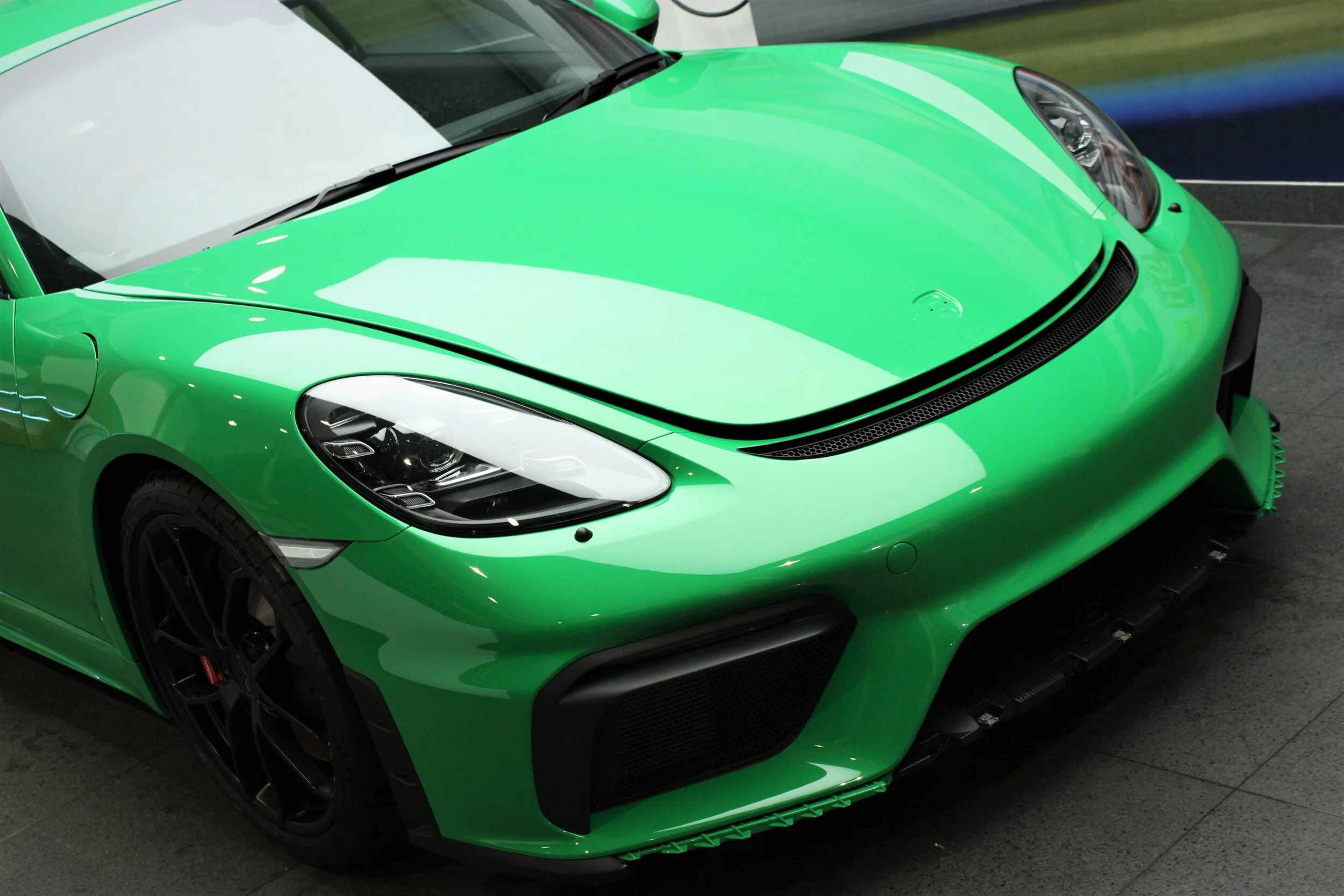Paint Protection Film
Paint Protection Film, or ‘PPF’ for short, is a urethane based clear film with only one purpose in mind - to protect your paintwork! Its original intention was to prevent wear of helicopter rotors in the harsh desert winds. It’s come a long way since then, and is now one of the most popular methods to protect your vehicles paintwork.
Take a look at some PPF we recently installed on this stunning ‘Python Green’ Porsche GT4.
PPF is becoming increasingly popular, and over the last 18mths I’ve seen a rise in demand for it. I think it goes hand-in-hand with detailing, given that my clients usually want the best looking paint, and then like to protect the finish. Ceramic coatings are still my go-to product for protection, as they fit a greater number of budgets, and offer a significantly better percentage of protection over traditional waxes or sealants. However, don’t be mistaken into believing a top end ceramic coating will protect your paintwork as good as PPF, because it simply wont. What ceramics do offer is quick and easy maintenance, added gloss, and also keep the car looking cleaner for longer; PPF on the contrary is solely designed to protect your paintwork against minor impact damage, such as stone chips, light scuffs, bug etching, and swirl marks associated with general maintenance. Said minor damage can often be removed with warm air or hot water, in some cases the engines’ residual heat is enough to allow the film to ‘self heal’, which is one of its main party tricks!
Is it worth the money? In my opinion, absolutely, as the cost of a respray on some ‘special’ or ‘individual’ colours often offered by manufacturers these days can run into the thousands just for a front end blow over to remove unsightly stone chips. The PPF on a front bumper will start to show signs of damage over time, but there will be no primer coloured chip where a stone has hit it, and the cost of a replacement bumper section of film is a few hundred pounds; in some cases you could replace this several times over before reaching the cost of a front bumper re-paint. Above all else, front end resprays are somewhat a taboo subject; the motor trade is notoriously dishonest when it comes to car sales, has the front end been blown over to repair stone chips? or has it been done to mask impact damage from a front end shunt? Many people prefer original paint, for this reason, particularly on appreciated classics, and also modern day limited production cars which mature in value.
Porsche GT4 with a full front end PPF kit installed.
What’s the ideal solution to protect your paintwork? If money were no object, you can protect the whole car with PPF, and we have done this several times since launching this service. The protocol is then to apply a flexible coating to the film itself, which will protect it against ingrained dirt, and also make cleaning much easier; akin to a ceramic coating on the paintwork! This belt and braces approach ensures the film will last for its predicted 10yr lifespan, and it’ll give you added piece of mind that it wont get ruined by the elements - PPF is prone to water spotting, which is one of the very few ‘cons’ amongst a sea of ‘pros’. The idea of a flexible coating also allows the film to maintain its self healing abilities.
However, our most popular install is the Full Front End kit, as featured on the GT4 in this article - I believe this level of protection, along with the application of a ceramic coating to the rest of the paintwork, offers the best value for money. The film protects the high wear areas, while the ceramic coating takes care of the rest. The total cost as shown is £1950.
If you’re interested to learn more about our Paint Protection Film packages, then check out our menu here.





